Air Purifiers: 5 Drivers of Customer Experience Excellence
Jan 2018 – Nov 2018
Category Analysis – Air Purifiers
Region-Romania
Rising level of air pollution and growing health consciousness among consumers has pushed the global air purifiers market to an estimated $29 billion by 2021. The residential air purifiers market is expected to register a CAGR of over 6% for the period 2018-2023. This report offers an in-depth analysis of the air purifier industry. Identity the investment opportunities using the customer perception drivers and customer beliefs.
Send this Report to Email
Methodology
The analysis is based on customer reviews and conversations online in the segment. The analysis results presented are completely unbiased and not based on any subjective judgement. The source data used for the analysis are user conversations available publicly online like public forums and social media.
600
Total number of customer conversations analyzed
Air Purifiers: 5 Drivers of Customer Experience Excellence
Executive Summary – Key Takeaways
Air Purifier Industry Overview
-
Global residential air purifier market is estimated to reach USD 8.65 billion by 2024.
-
Projected to grow at a CAGR of over 6.0% during the period of 2016-2024.
Air Purifier Industry Growth Drivers
Air purifier market growth is predominantly driven by factors like rapid urbanization, industrialization, environmental affects of air pollution and increasing public awareness regarding healthcare.
Europe has seen an increase in airborne diseases such as irritation, asthma and cancer. Increased exposure of people to air pollutants and degrade of the air quality index have pushed people to adopt air purifiers in European market. In addition, European Environment Agency (EEA) has released statement stating that there has been an increase in the number of patients with air borne diseases. These reasons have given rise to the growth of market for air purifier in Europe. Increased awareness about health problems arising due to bad quality of air has led to higher sales of air purifiers.
In addition, the rising personal disposable income of Romanians is making it more affordable to buy a air purifier which in earlier days would not have been possible with limited income.
There has been a shift toward energy efficient air purifiers by consumers. This has led to the growth of the residential air purifier market. There has been an increase in demand for HPEA filtration technology. HEPA technology in residential air purifiers removes air pollutants and smoke from home. This i s resulting in an increase in the adoption of residential air purifiers when compared to the older and conventional air purifiers. Currently, air purifier sales is primarily seen in the residential market. But market is expected to grow in commercial applications due to the declining prices in the coming days.
Air Purifiers: 5 Drivers of Customer Experience Excellence
Brand managers and marketers should look through the eyes of the customers to see how they experience brands in the real world.
Marketers are no more limited to just nice words and advertising – it has evolved into knowing customer perceptions. It is important to know how customers really feel about their brands and what are the drivers of brand loyalty. Customer experience plays a major role in buying behavior. Hence companies are going the extra mile to create a pleasant and happy customer experience. Companies are ready to spend money and effort to influence customer perception and drive profitable consumer behavior.
We, at Clootrack capture every experience that customers have with their brands. We analyze thousands of customer experiences to capture what people feel about a brand, and in turn derive priceless insights into products and competition.
All brands perform pretty well in terms of getting the basics right, delivering great designs and customer service. But how can an air purifier brand differentiate and establish itself as a strong brand offering higher meaning?
Clootrack went beyond just social platforms to track discussions – online forums, social media groups, internal data such as customer care tickets, chatbot extracts, emails, and any other internal maintained forums. And all this is to understand customer perception – what your customers and prospects think of your brand – to analyze the perception drivers for air purifier brands.
Here we explore the evolving air purifier landscape and the top customer perception drivers, delight drivers, and brand equity.
5 Drivers of Customer Experience Excellence
Perception is awareness or an understanding of something. Consumer perception plays a vital role in consumption behavior thereby affecting the demand for a product. Hence it becomes key for a manufacturer to understand the perception drivers. A manufacturer must understand the likes and dislikes of his customers to be a successful marketer.
Through a detailed analysis of 600 online consumer conversations, Clootrack has listed down the top 5 perception drivers.
Below are the top 5 factors that consumers consider while buying an air purifier.
1. Improvement in air quality
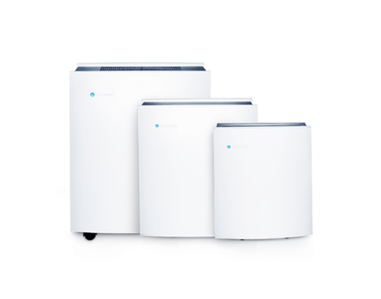
When consumers consider buying an air purifier, the first thing on their mind is the improvement in indoor air quality. Research facts says that air quality inside our homes is up to 5 times more polluted than the air outside. Due to this reason, most of the consumers make that decision to improve their indoor air quality.
Air purifiers that have high efficiency particulate arresting (HEPA) capability are able to capture 99.97% of particles. It sucks and arrests dust particles thereby keeping the air clean. Manufacturers of air purifiers should keep this factor high on their list when they innovate and release air purifiers into the market.
2. Effectiveness of an air purifier
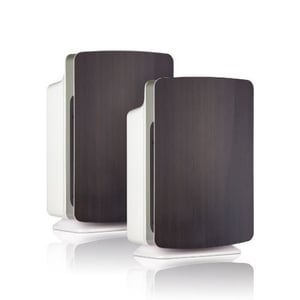
Consumers always wonder whether they really need an air purifier and whether they actually work? Air purifiers work with a technology where they strip the air of harmful airborne household contaminants – such as dust, mold spores, allergens, bacteria and household cleaners that get trapped inside the house. This cleanses the air around you thereby reducing the chances of dust and other contaminants to get inside your lungs. This convinces the consumers that air purifiers are an essential investment if they need cleaner air around them thereby promoting better health. Manufacturers of air purifiers should ensure that this important factor of an effective air purifier is satisfied in order to satisfy the consumers.
3. Lifetime of filters
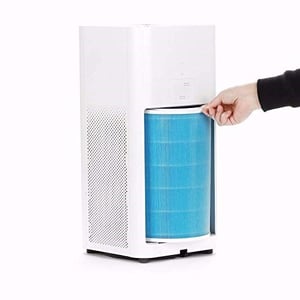
When shopping for an air purifier, consumers want to be sure about the frequency of future filter replacements. Some air purifiers use one combination filter and that needs to be replaced. There are also air purifiers that never need filter replacements as they use heat or ultraviolet light to purify the air and kill germs and allergens.
Consumers want to know explicitly the filter life of their products before buying an air purifier. The filters have to be changed at recommended intervals for better performance. While some need to be changed once a year, there are activated carbon filters that last 6 months and the pre-filter lasts 3 months.
Consumers prefer to know the varieties of HEPA filters and their lifetime. While a highly dense paper filter that’s degradable and must be replaced, there are also mesh filters that are washable and are permanent.
Manufacturers should consider this important factor while making and releasing new air purifiers.
4. Range of air purifiers
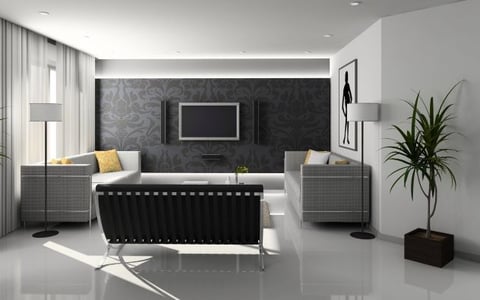
Apart from the basic function of purifying the air, consumers also want added features that will make it easier for the operation and efficiency of air purifiers. Consumers are asking for features such as handles for easy mobility, caster wheels, remote control, digital controls, filter change indicators, multiple fan speeds, programmable timers, air quality sensors, and much more. There are air purifiers that you can control with your mobile phone using wi-fi. Further consumers are demanding air purifiers that save money as well as conserve energy.
Manufacturers of air purifiers should consider these important factors as consumers are moving towards ease and comfort combined with the use of technology such as smartphones and wi-fi.
5. Demand for remote control

Apart from the main air purifying act, consumers also tend to consider convenience as much as other factors. Consumers prefer an air purifier that comes with a remote control. This feature enhances the experience of the consumers by allowing them to operate the air purifier from anywhere without walking up to it every time. Consumers want to control their unit remotely to regulate the speed according to the actual amount of pollutants in their environment. Manufacturers of air purifiers should add features that add convenience to the users which will push them to use them more often by turning on or off as desired.
Air Purifiers: 5 Drivers of Customer Experience Excellence
In this report we have presented the relationship between different perception drivers in the form of a graph. It can be used to sense the degree of importance that consumers attach to various factors.
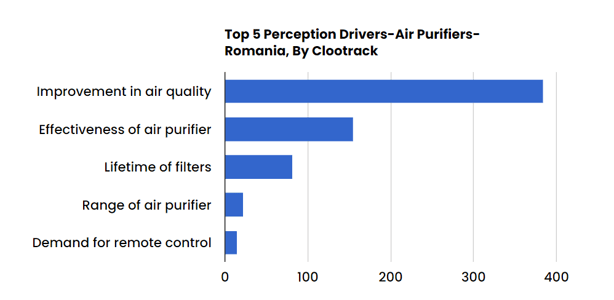
Consumer Beliefs
The brand must reflect customer beliefs. When it comes to convincing consumers, the secret is to understand the consumer's beliefs and behavior. This will eventually lead you to know what a buyer wants from your business. Customer has a deep understanding of what they want from a product.
When it comes to air purifiers, customers have their own list of beliefs. They truly differentiate a high-performing air purifier that satisfies below beliefs from the rest of them that they see in the market. These customer beliefs help air purifier manufacturers to customize the products for the customers.
1. Air Purifier makes more noise at a higher speed
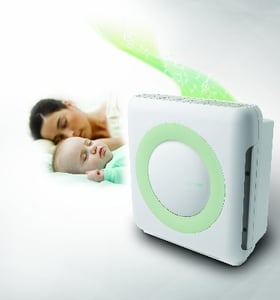
Most consumers believe that air purifiers make more noise when operated at high speed. Many consumers have noticed that air purifiers are quiet at low fan speed, but as the speed increases to full blast, the noise level is quite high. Consumers are pushed to leave the fan running at a low speed to eliminate the background noise while they fall asleep.
2. Air purifier is a must in polluted cities

Installing air purifiers in polluted cities has become a must to combat the deadly respiratory and circulatory problems that arises due to polluted air. In most of cities that are highly polluted, consumers feel that the need of air purifiers has increased to remove airborne pollutants like dust, mold spores, bacteria, pollen and pet dander. Air purifiers are used to reduce air contamination inside the house and reduce indoor air pollution to some extent.
3. Ionization of air upsets the users

Air ionisers are used in air purifiers to remove particles from air. Airborne particles become charged as they attract charged ions from the ioniser by electrostatic attraction. Ionic air purifiers (ionizers) emit negative ions into the air as a way to clean it.
Most of the consumers believe that ionization of the air upsets the users of the air purifiers. There are claims that ionisers produce unhealthy levels of a by-product called ozone, making this air ionizer a health risk for users. This meant that the ionizers contaminated the air instead of making it safe for people to breathe.
4. Air Purifiers are used to avoid allergic reactions to pollen

Consumers believe that an air purifier can eliminate indoor environmental allergies. Consumers believe that people who are allergic to pollen and have seasonal allergies can get relief with the help of an air purifier. They not just remove dust and smoke from the air, but help to remove allergenic substances like animal dander and pollen.
Top 3 Emerging Trends
One of the significant emerging trends seen in the air purifier industry is the application of technology and innovation to release machines with higher automation which can conserve electricity. With higher pollution and greater health consciousness, people are moving towards owning an air purifier to enable a safer and cleaner indoor air quality.
1. Long-lasting filters
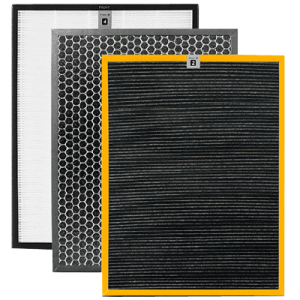
The latest trend in the air purifier market is to move towards permanent filter which has a long life or a filter that does not have to be replaced at all.
Most of the filters available today have to be washed and cleaned and finally replaced at the end of 3-6 months.
The current trend is to manufacture air purifiers that have permanent filters that can be used for the life of the product and does not have to be replaced
2. Visual air quality indicators
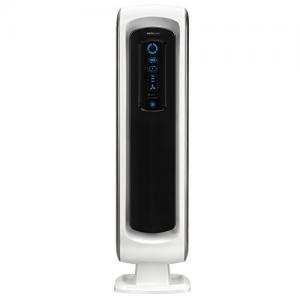
Having the air purifier is not enough until consumers are able to visually check the quality of the air which they are breathing indoors. The visual air quality indicators are emerging as a trend in air purifier industry.
The air quality indicators will display the quality of the air using a particulate matter sensor. The sensor will be able to detect microscopic particles present in the air showcasing live readings of both indoor air and outdoor air.
3. Portable purifiers
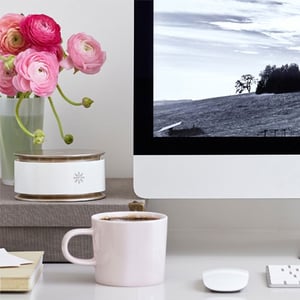
Air purifiers have become a popular fixture in most households. But the lifestyle of modern consumers has become so mobile, that devices are moving towards portability. Portable air purifiers give consumers the benefit of moving the air purifier to any room of their choice, can carry it in their cars, keep it on desktops, many more places where consumers generally spend their time. The air purifier industry is also acknowledging the portability aspect and hence the latest emerging trend is to come up with portable air purifiers.
Detailed Report
The air purifier market is estimated to rake an ample amount of demand due to the inclination toward healthy lifestyle. Learn more about the positive and negative keywords, emerging trends, service drivers, and consumer delight factors.
You can download the pdf version of the complete report for free. Enter your email at the end of this report and we’ll send it to you for FREE.
